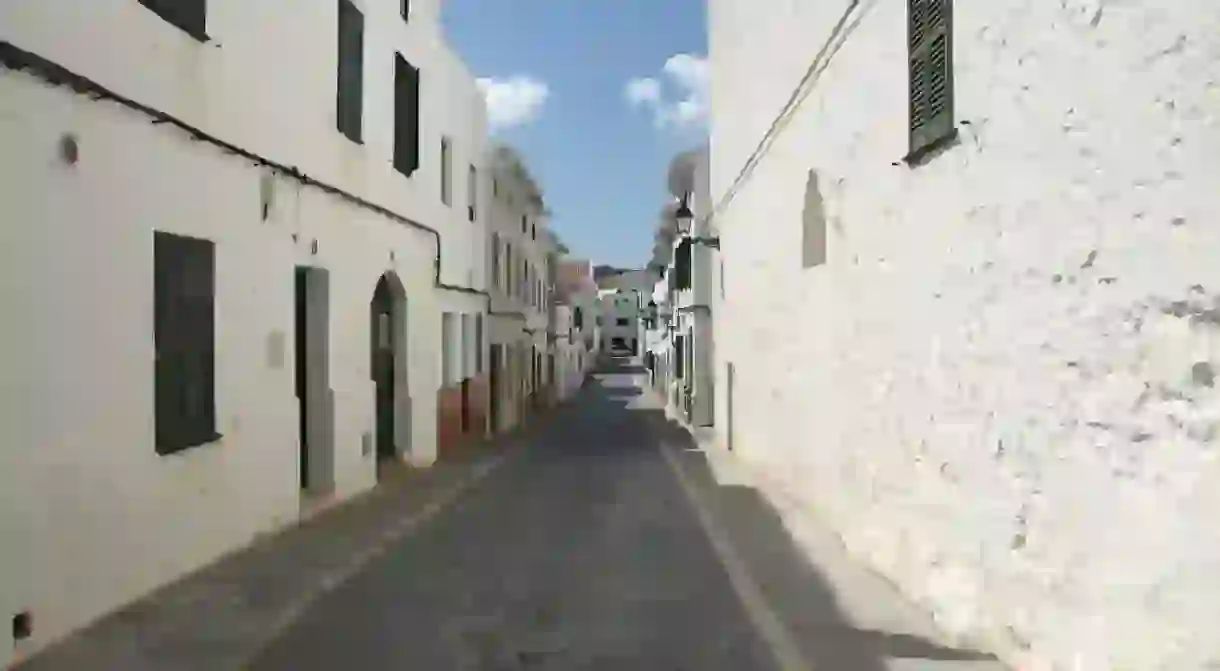7 Things to Know Before Visiting Menorca

Menorca is just a smaller and quieter version of Mallorca, right? Wrong! While it does have plenty in common with its larger sibling, such as numerous stunning beaches and picturesque landscapes, there are many things that make this most easterly of the Balearic Isles unique. So read on for some useful things to know before booking your flight.
It has an astonishingly rich history
It will come as a surprise to many that Menorca boasts one the most impressive collections of ancient freestanding stones and constructs – around 1,500 megalithic sites in fact. The island’s original inhabitants, the bronze-age Talayots, were responsible for these settlements, some of which date back thousands of years. Fast forward a few centuries and starting with the Romans, numerous foreign forces have invaded the island, including the Moors, Spanish, French and British, each imprinting a piece of their culture that can still be seen in its towns and cities.
It has some of the best dining in the Balearics
It surely stands to reason that the island responsible for the invention of mayonnaise – from the capital Mahón – has a rich culinary tradition. First off, as one of the greener of the Balearics, it produces lots of milk (and therefore excellent butter and cheese). Add some locally-caught seafood, and mix in a wide range of gastronomic influences, and you get an outstanding dining scene. Don’t leave the island before tasting the Menorcan specialty of Caldereta de Langosta or lobster stewed in a rich stock.

The winters are cold and wet
The usually sun-soaked isle can certainly kick up some ugly weather over the winter months. With so much coastline exposed to the sea, storms are common – especially on the more rugged north side – though without a natural barrier (like Mallorca’s Tramuntana sierra) the whole island can get wet and battered. Much of the island also shuts down, including most of its hotels, restaurants and even some of its public transportation. That said, you are likely to have most of the island practically to yourself over the winter, with all its unspoiled beauty untroubled by the summer crowds.
There are two fascinating cities to explore
Set on either ends of the island, Menorca’s cities of Mahón and Ciutadella could literally not be further apart (westerly Ciutadella is in fact closer to Mallorca than it is to the island’s capital). They also have a very different look and feel. Ciutadella was actually the original capital, being the seat of the bishop from the 4th century, and its old town is particularly elegant with plenty of lovely Gothic and Neoclassical architecture. Mahon became the capital in the 18th century with its possession by the British, and while its centre is still picturesque it has a more colonial feel, with numerous fortifications referencing its strategic military importance.

It’s not just about the beaches
While Menorca does indeed boast an embarrassment of beautiful beaches, from secluded virgin coves to long sweeping stretches of coast, visitors not exploring beyond the sand are missing out. Once used as part of a 14th century defensive network, the Cami de Cavalls (or the Path of Horses) is an 185-mile track around the edge of the island broken down into 20 stages, making it ideal for all levels of hiking and horse-riding. A protected biosphere reserve, its gorgeous rolling countryside also offers numerous trails through pine forests as well as the S’Albufera des Grau Nature Reserve, home to most of the island’s native (and plenty of non-native) wildlife. And don’t forget to visit one of the many charming traditional villages en route – Es Mercadal is a particularly pretty whitewashed village definitely worth a stop.
It has some excellent native produce and products
Also thanks to various historical quirks, several important industries have sprung up on the island. One of the more obvious is its sandals, originally a peasant shoe the Menorquina or Avarca are now sold the world over. Cheese is also one of Menorca’s most popular exports, mostly recognisable from its distinctive orange rind, extreme cheese fans shouldn’t go home with the mature añejo variety – they’re over a year old and have a spicy kick akin to Parmesan. Gin lovers too can find the native spirit, Xoriguer, a perfect accompaniment for a G&T or, even better, island speciality pomada, comprising gin and cloudy lemonade.

There’s little nightlife but some great bars
Visitors expecting anything like the clublife of fellow Balearic Ibiza will certainly be disappointed. Nightclubs are few and far between and almost exclusively limited to the two cities. Night owls on the east coast should make a beeline to the Cafè des Museu, which serves great cocktails with a buzzing basement featuring regular DJ sessions. Opposite the capital’s main port is Akelarre, a cool jazz-oriented bar with regular live music and atmospheric interiors. But the island’s most famous bar is the Cova D’en Xoroi, set into the cliff in the otherwise low-key resort of Cala en Porter – it is perfectly positioned for daily sunset views over the sea from its cliffside terraces. To guarantee a good seat for this unforgettable experience, it’s best to book in advance.














